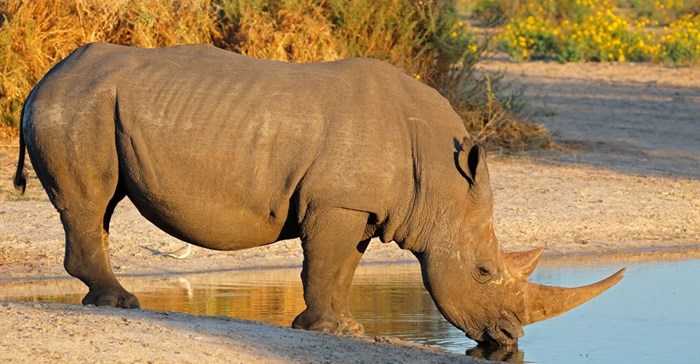
Subscribe & Follow
#AfricaMonth
In the news
3D fake rhino horn is its own dilemma

The Seattle company claims the fake horns will reduce rhino poaching. But South African and international experts worry that it might have the opposite effect and deepen the crisis.
Pembient plans to unveil the simulated rhino horns next month. Company CEO Matthew Markus said that according to a survey, "45% of users would accept rhino horn made in a laboratory".
But Tom Milliken, who coordinates the elephant and rhino programme at Traffic, an international organisation that monitors wildlife trade, said the printed horns would simply hamper control efforts.
"There are plenty of false rhino horns on the Vietnamese market already, but it does not displace or deter the illegal trade. Allowing a substitute to be marketed only confounds law enforcement," he said.
Pembient said fake horns would "provide an outlet for consumers in the same way faux fur has in the past".
According to Kirsty Brebner, rhino project manager at the Endangered Wildlife Trust, about 3500 rhinos were poached in South Africa - which has the highest rate of rhino poaching in the world - in the past five years. The 2014 figure was three times the figure in 2010.
Cape Town lawyer Eishe Heitmann, who specialises in environmental law, said comparisons to the fur industry did not hold water. Fur was valued for its aesthetic appeal, which meant faux fur was a "viable alternative", but horn was prized for its perceived - albeit unproven - medicinal properties and was therefore less likely to give way to its fake counterpart, she said.
"The goal behind printing horns is ostensibly the same as that of legalising the trade: to saturate the market and thus reduce market price, thereby undermining the illegal trade and the poaching incentives that go with it."
But consumers' "imperviousness to ballooning inflation, coupled with the nature of the demand for the product, suggests there is an unwillingness to seek or accept alternatives such as the 3D printed horns".
However, Heitmann said, the 3D horns could play a role in a context of a legalised trade.
"In addressing supply, multiple approaches should be employed. Legalised trade, supported by sustainable use, should be implemented in addition to offering inexpensive and readily available alternatives such as 3D printed horn."
Milliken said reducing demand in Asia was the only way forward.
"It is eminently possible and that is where the effort needs to be placed," he said, adding that "better policing and enforcement" were crucial.
"Endorsing misplaced beliefs and marketing a look-alike, taste-alike substitute is not an acceptable alternative."
Source: Sunday Times
Source: I-Net Bridge

For more than two decades, I-Net Bridge has been one of South Africa’s preferred electronic providers of innovative solutions, data of the highest calibre, reliable platforms and excellent supporting systems. Our products include workstations, web applications and data feeds packaged with in-depth news and powerful analytical tools empowering clients to make meaningful decisions.
We pride ourselves on our wide variety of in-house skills, encompassing multiple platforms and applications. These skills enable us to not only function as a first class facility, but also design, implement and support all our client needs at a level that confirms I-Net Bridge a leader in its field.
Go to: http://www.inet.co.zaRelated
New nature reserve established in the Soutpansberg 27 Jan 2025 The causes making a difference in SA 4 Jun 2024












